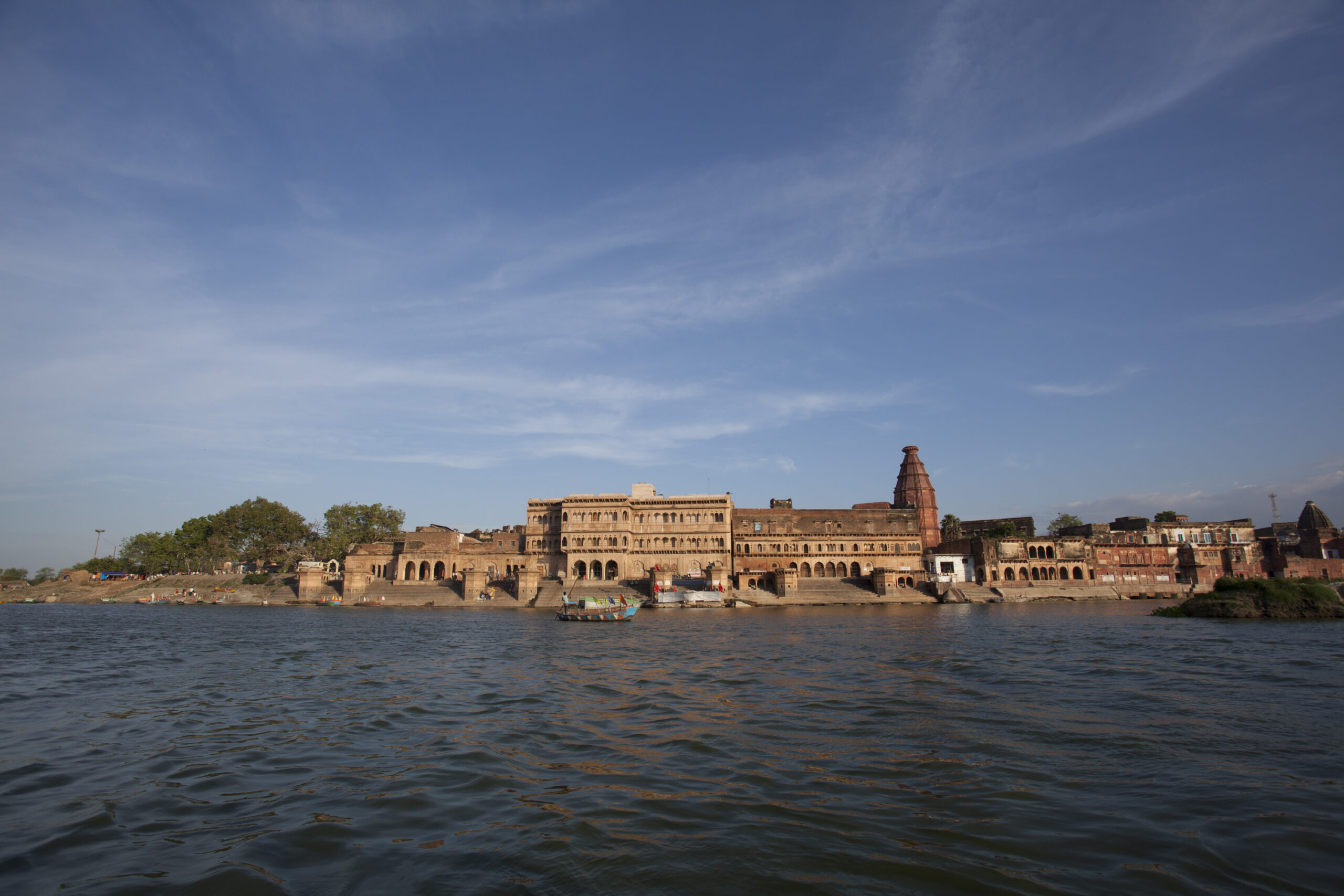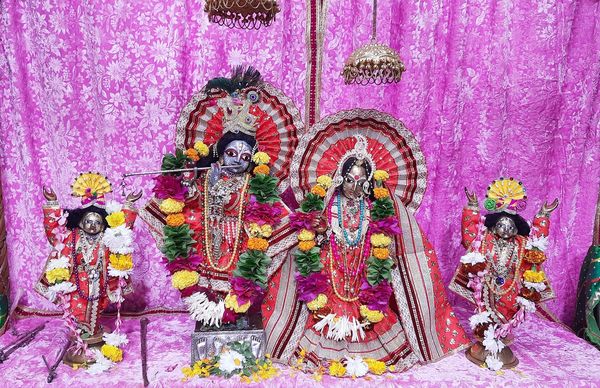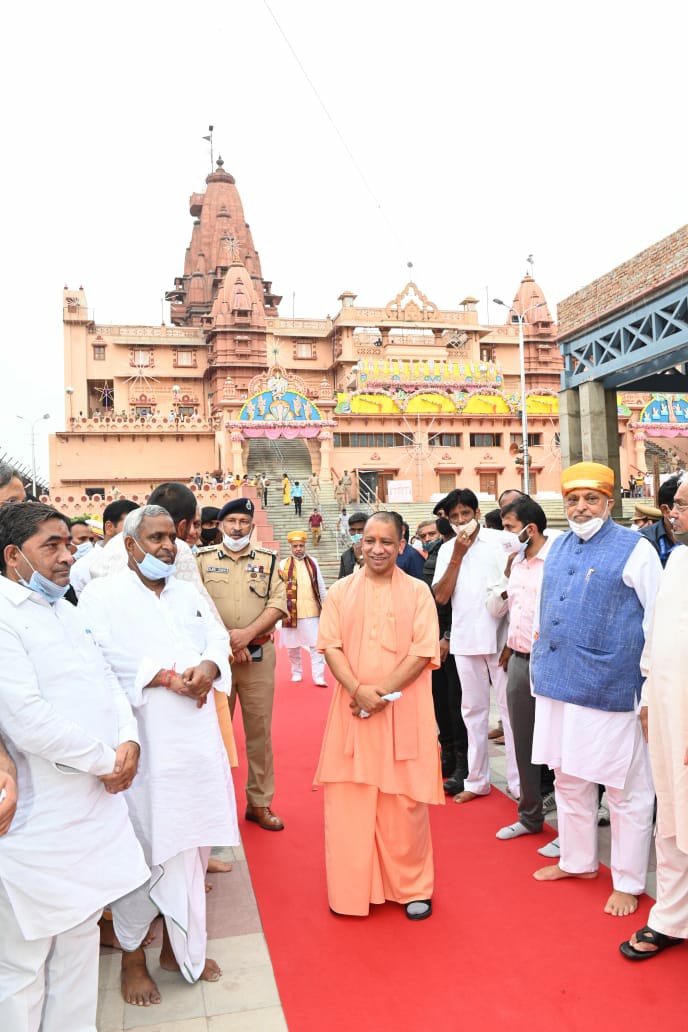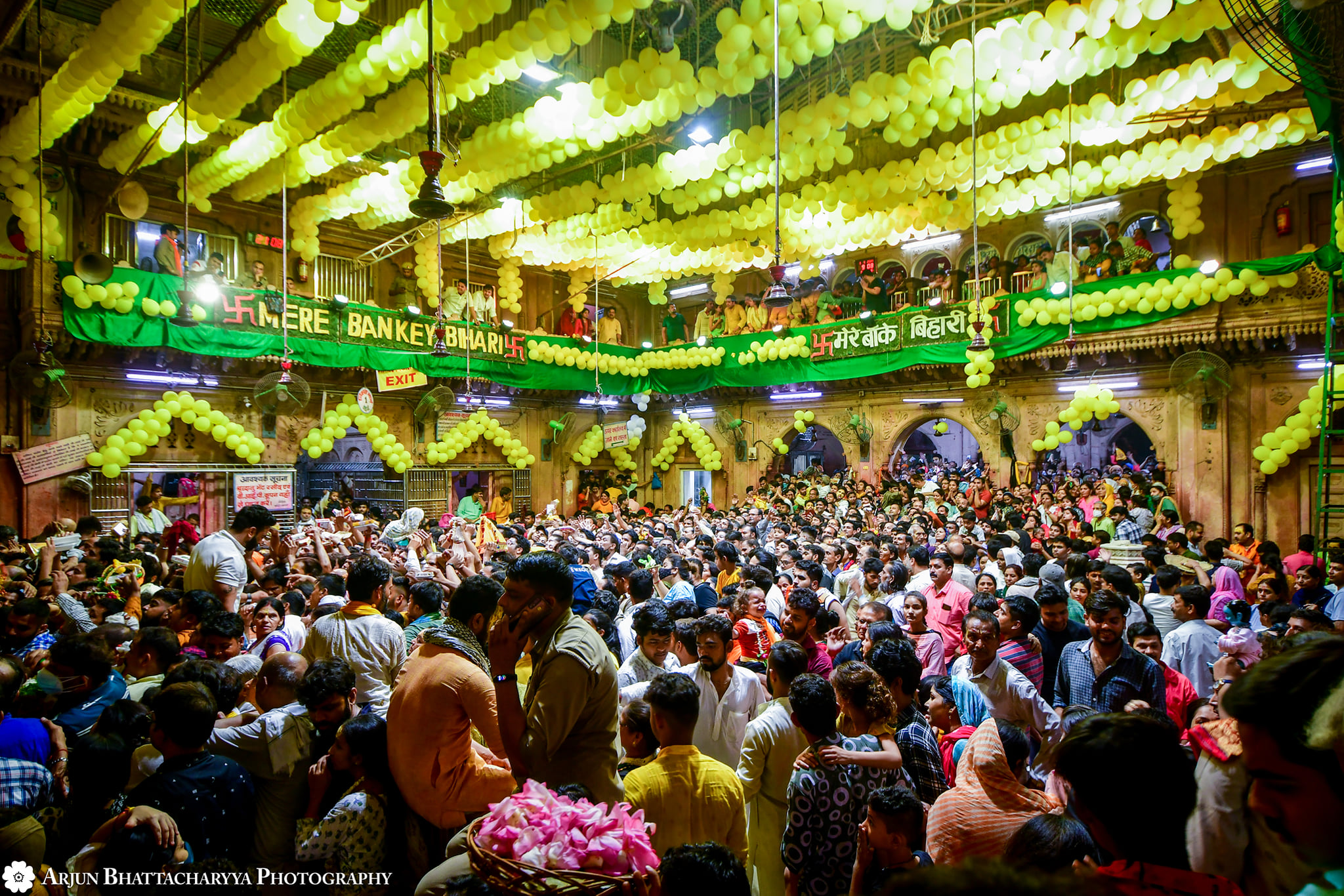By Brij Khandelwal
2024.09.06 (Vrindavan Today News): The transformation of Vrindavan, a town deeply intertwined with the Sri Krishna Radha lore and revered as the nucleus of the Braj Mandal, from a spiritual haven to a commercialized tourist spot is a matter of deep concern among devotees and conservationists alike.
The shift from a place of pilgrimage and religious significance to a hub of tourism has led to a decline in the spiritual ambiance that once permeated the town.
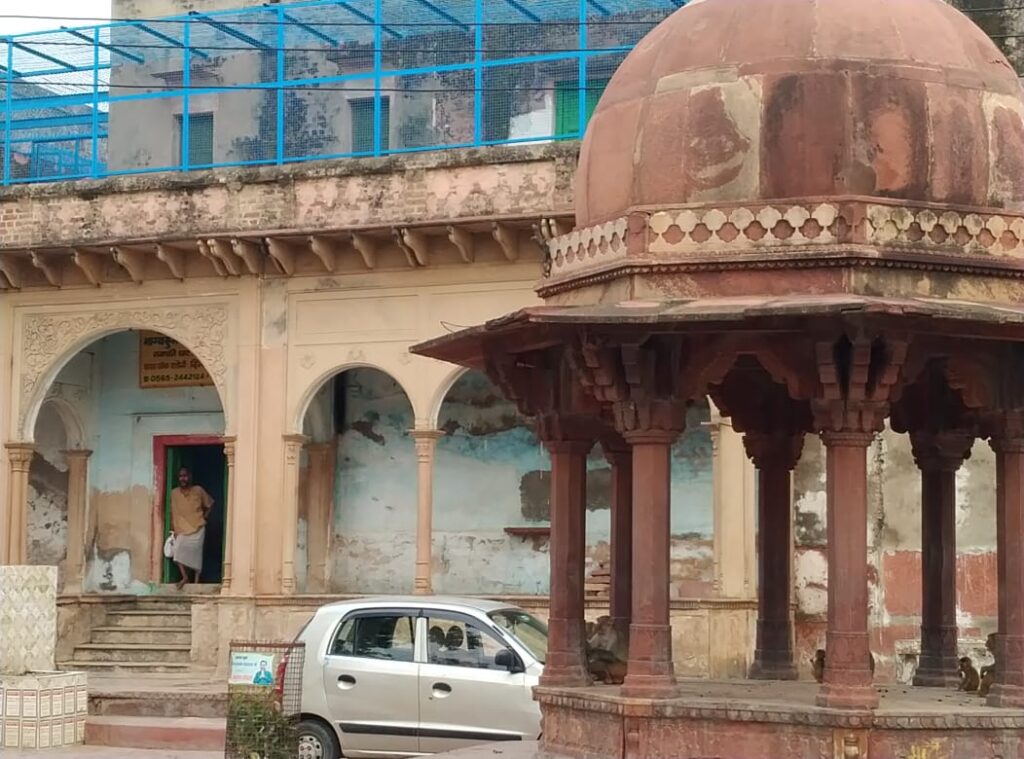
Sadly, once a town of thousands of temples, it’s now becoming a crowded cluster of hotels, guest houses, fancy ashrams, multi storeyed complexes.
The commercialization of spirituality in Vrindavan has resulted in the erosion of its sacred character. The vibrant green pastures and serene Yamuna ghats that used to evoke a sense of peace and piety have been replaced by overflowing streets, noisy markets, and haphazard constructions. The influx of tourists, along with the rapid urbanization and commercial activities, has not only altered the physical landscape of Vrindavan but has also impacted the spiritual essence that drew people to this holy town for centuries.
The Yamuna floodplains have been usurped by real estate sharks.
The pollution of minds, bodies, and the environment in Vrindavan is a direct consequence of this unchecked commercialization and urbanization. The rampant construction has encroached upon the natural surroundings, leading to the degradation of the ecosystem and the loss of biodiversity. The once-pure waters of the Yamuna river are now polluted, and the air is laden with dust and noise, obscuring the spiritual vibes that once resonated in the town.
To restore the sanctity and heritage value of Vrindavan, conservational measures must be initiated without delay. Preserving the architectural heritage, including the ancient temples and ghats, should be a top priority to maintain the town’s historical and cultural significance. Additionally, efforts should be made to revive the green spaces and rejuvenate the Yamuna river to safeguard the natural environment and promote a sense of spirituality and tranquility.

Promoting sustainable tourism practices is crucial to strike a balance between the economic benefits of tourism and the preservation of Vrindavan’s spiritual ethos. Local authorities and community leaders must work together to regulate tourism activities, limit commercial encroachments, and promote responsible tourism that respects the town’s sacred heritage.
Educating the visitors about the cultural and spiritual significance of Vrindavan can also help create awareness and foster a sense of reverence towards the town.
Furthermore, engaging with local communities and religious institutions to involve them in the conservation efforts can strengthen the sense of ownership and responsibility towards preserving Vrindavan’s spiritual ambiance. Supporting initiatives that promote sustainable practices, such as waste management, water conservation, and eco-friendly tourism, can help mitigate the environmental degradation and uphold the sanctity of the town.
Indeed, Vrindavan’s decline in spiritual ambiance due to commercialization and urbanization is a pressing issue that requires immediate attention and concerted efforts from all stakeholders. By implementing conservational measures, promoting sustainable tourism, and raising awareness about the town’s cultural and religious significance, Vrindavan can reclaim its status as a revered heritage entity and a spiritual oasis for devotees and visitors alike.
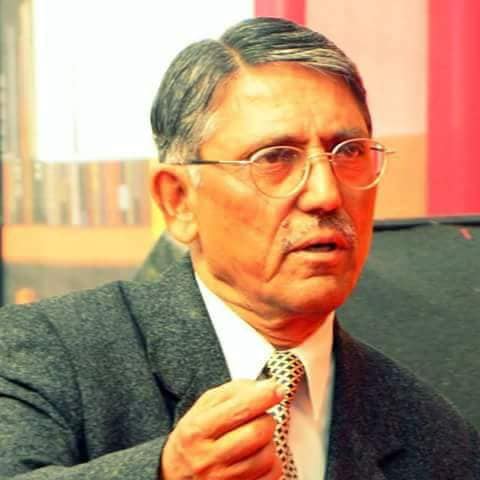
About the Author Shri Braj Khandelwal is a senior journalist and member of Vrindavan Today’s Editorial Board. He has worked for various newspapers and agencies including the Times of India. He has also worked with UNI, NPA, Gemini News London, India – Abroad, Everyman’s Weekly (Indian Express), and India Today. Shri Khandelwal edited Jan Saptahik of Lohia Trust, reporter of George Fernandes’s Pratipaksh, correspondent in Agra for Swatantra Bharat, Pioneer, Hindustan Times, and Dainik Bhaskar until 2004). He wrote mostly on developmental subjects and environment and edited Samiksha Bharti, and Newspress Weekly. He has worked in many parts of India. He has authored two books on the environment, Towards New Environment and Taj Mahal in Pollution Cauldron: A Reporter’s Diary


